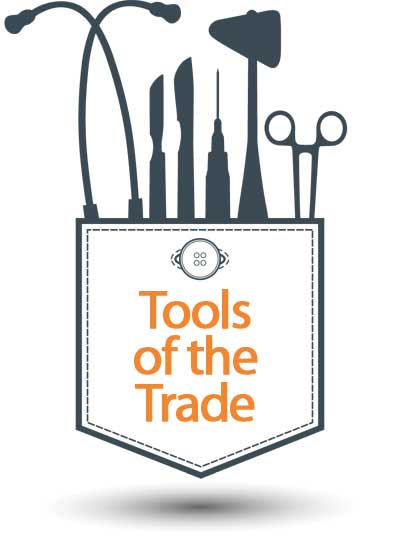 From taking a patient’s temperature with a thermometer to performing an EKG you may use different medical assistant equipment on a daily basis that varies in its difficulty to master.
From taking a patient’s temperature with a thermometer to performing an EKG you may use different medical assistant equipment on a daily basis that varies in its difficulty to master.
Medical assistant tools commonly used at a primary care physician’s office
- Examination tables
- Exam lights
- EKG (electrocardiogram) machines: A machine with electrodes that are applied to parts of the patient’s body; the machine reports on the electrical activity of the heart
- Scales: Used to measure (usually manually) a patient’s weight and height
- Hemoglobin machines: A machine used to test a small sampling of blood for the amount of hemoglobin (protein in red blood cells) in a patient’s blood
- Locked cabinetry: Medical supplies, equipment, and medications are often locked to avoid theft
- Autoclave: A small pressure chamber used to sterilize medical office equipment and tools after use
- Computer: Used to enter and maintain electronic Health Records (EHRs)
- Stethoscope
- Blood pressure meter (sphygmomanometers): A cuff and air pressure pump that increases a patient’s blood pressure in order to measure
Medical assistant tools and supplies commonly used in medical offices
- Syringes
- Vaccines
- Biohazard Sharps Containers (for bio-hazardous waste removal)
- Exam gowns
- Cotton balls and swabs
- Suturing materials
- Masks and gloves
- Sterilizing solution
- Glucometers
- Thermometers
- Otoscopes
- Tongue depressors
- Penlights
- Ear scopes
- Surgical instruments (scalpels, forceps, hemostats and needle holder)
Medical assistant tools vary depending on the employer’s type of office or clinic and the medical office equipment used at that facility. Here is a rundown of what a medical assistant might do when a patient comes in to a physician’s office:
Greet patient: Say hello to the patient and ask who s/he is, who s/he is there to see, and what time the scheduled appointment is for. You may need to pull a patient’s EHR before the patient’s scheduled appointment.
Measure vital signs: You may need to measure vital signs before the doctor examines the patient. You may use a blood pressure meter (sphygmomanometers) and/or a stethoscope to take a blood pressure reading, use a hemoglobin machine to test the patient’s blood, and a scale to record a patient’s height and weight. If blood is taken, you’ll have to use sterilized materials to both take the blood and to bandage the patient.
Take patient history and personal information: Before the physician sees the patient, you may ask the patient why s/he is there, what symptoms s/he is experiencing, what medications s/he is presently taking—writing all the answers down in the patient’s file. You may then either inform the doctor of the patient’s vital signs and history or give the patient’s file to the doctor.
Input patient information into system: When the doctor is finished seeing the patient, you may need to call prescriptions in to a pharmacy and add the patient diagnosis and information into the patient’s EHR.
Purdue University Global
Medical Office Administration Certificate
Purdue Global’s online medical office administration program is designed to equip you with the knowledge and technical skills necessary to pursue entry-level positions in this exciting field. Coursework focuses on areas including insurance processing and fundamental medical office administrative and clerical tasks.
Prepare examination room for next patient: Before the next patient is seen by the doctor, you may be tasked with preparing the exam room by sterilizing tools in an autoclave, disposing of any bio-hazardous waste (cotton swabs or syringes) in the proper way, and putting out any necessary medical office equipment or supplies needed that are specific to the next appointment.
Because every office is different and each medical facility runs differently, medical assistants may receive training that is specific to their place of employment once they are hired. Many medical assisting programs provide you with the opportunity to learn the skills and knowledge needed to pursue an entry-level position in medical assisting. Visit our careers page for information about different types of medical assisting careers.

